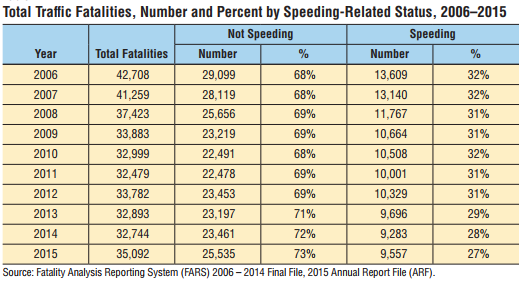How to Keep Your Drivers Safe on the Road

Why does workplace motor vehicle safety matter?
Millions of workers drive or ride in a vehicle as part of their jobs, and crashes are the leading cause of work-related deaths in the United States.
Who is at risk?
All workers are at risk of crashes, whether they drive light or heavy vehicles, or whether driving is a main or incidental job duty. Anyone who operates a motor vehicle as part of his or her job is at risk of being involved in a roadway crash.
Know the statistics
- $25 billion total cost to U.S. employers for motor vehicle crashes at work—$65,000 per nonfatal injury & $671,000 per death.
- In 2015, 391,000 people were injured in motor vehicle crashes involving a distracted driver.
- Seat belts saved almost 14,000 lives in 2015.
- There were 35,092 traffic fatalities in 2015. Among them, 9,557 (27%) were in crashes where at least one driver was speeding.
Distracted driving at work
Workers in many industries and occupations spend part of their workdays on the road. One study showed drivers at work were more likely to be in a hurry to reach their destination, thinking about work, tired, or using a cell phone.

Common Types of Distracted Driving:
Visual: Eyes off the road
- Reading a text message
- Looking up directions
- “Rubbernecking” (i.e., craning one’s neck to get a better view) at a crash site
Manual: Hands off the wheel
- Reaching for things inside the vehicle
- Using a hand-held device
- Adjusting the radio
- Eating or drinking
- Applying makeup
Cognitive: Mind off driving
- Talking on the phone
- Arguing with a passenger
- Thinking about your next appointment
Preventing Distracted Driving
Employers: Use the following recommendations to prevent distracted driving.
- Ban texting and hand-held phone use while driving a company vehicle, and apply the same rules to use of a company-issued phone while driving a personal vehicle.
- Consider banning the use of hands-free phones.
- Require workers to pull over in a safe location if they must text, make a call, or look up directions.
- Prepare workers before implementing these policies by communicating:
- How distracted driving puts them at risk of a crash
- That driving requires their full attention while they are on the road
- What they need to do to comply with your company’s policies
- What action you will take if they do not follow these policies
- Consider having workers acknowledge that they have read and understand these policies.
- Provide workers with information to help them talk to their family about distracted driving.
Speeding
NHTSA considers a crash to be speeding-related if any driver in the crash was charged with a speeding-related offense or if a police officer indicated that racing, driving too fast for conditions, or exceeding the posted speed limit was a contributing factor in the crash.

Drowsy Driving
- Your company should not require workers to drive irregular hours or far beyond their normal working hours. Most drowsy driving crashes occur between 12 am to 2 am, 4 am to 6 am, and 2 pm to 4 pm.
- You can have policies that allow workers to stop for the night if they are too tired to continue driving.
- You can also give workers information about good sleep habits and ways to stay more alert while driving
Other tips to keep your driver safe
- Assessment of the hazards your drivers face. You should identify hazards associated with drivers, vehicles, and roads, then decide what steps you will take to eliminate or reduce those hazards.
- Journey management. Can the work be done without traveling? The most effective way to prevent motor vehicle crashes is to reduce the amount of driving your workers do.
- If travel is necessary, consider safer forms of transportation such as air and rail.
- Work schedules should allow employees to obey speed limits and to follow applicable rules such as hours-of service regulations.
- Make sure that the driver and supervisor agree on the driver’s route, destination, and travel schedule. The driver should be able to contact his/her supervisor in case of an emergency.
- Establish procedures for reporting and investigating work-related crashes and vehicle breakdowns.
- Give employees information about road construction or closures, and bad road conditions.
- Seat belts. Require the use of seat belts at all times by all drivers and passengers.
- Preventing impaired driving.
- Your company should consider having a policy that prohibits workers from operating a vehicle under the influence of alcohol, legal and illegal drugs, or prescription and over-the-counter medications that could affect their ability to drive safely.
- You can give workers information about the possible effects of prescription and non-prescription medications on their ability to drive safely. Your company’s health and wellness program may be able to help you locate and distribute this information.
View this Safe Driving Checklist Here.
